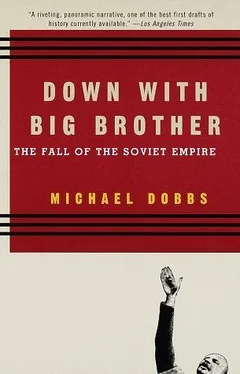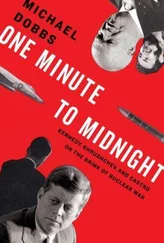As he regained consciousness, Amin began asking questions. “What’s happening in my house?” he demanded. “Who did this? Is this an accident—or some kind of diversion?” 42But it still did not occur to him to suspect his Soviet comrades. “Believe it or not, this is the work of the Taraki group,” he told his wife, who had not attended the luncheon. 43
THE CRUMBLING AVENUES and twisting alleyways of Kabul were practically deserted as Grigori Boyarinov embarked on the mission that would mark the start of the Soviet Union’s last great colonial adventure. The evening curfew came into force at 7:00 p.m., and only security personnel were allowed on the streets. The sprawling mud slums on the outskirts of the city seemed peaceful. Confined to their homes, many Afghan families were preparing to sit down for dinner. Radios and television sets were blaring out from countless courtyards. The aroma of shashlik—a pungent mixture of oil, wood fires, and sizzling meat—filled the crisp winter air.
A plan to poison the Afghan leader and take him into custody had already gone awry. Amin had only nibbled at his food and had been able to make a premature recovery. His aides had resisted Soviet offers to transfer him to the Soviet military hospital in Kabul. Alarmed by the mass food poisoning, the Afghan authorities had begun to strengthen the guard around the palace. The Soviet attack, originally planned for eleven that night, would now have to be brought forward.
Crouching in an armored personnel carrier a couple of miles from the Dār-ol-Amān Palace, Boyarinov waited for the signal to launch the attack. The fifty-seven-year-old colonel was easily the most experienced member of the sixty-member assault team. Indeed he could probably claim to be the Soviet Union’s leading expert on partisan warfare. As a young lieutenant in World War II he had earned numerous medals for bravery by parachuting behind German lines and causing havoc in the enemy’s rear. He had gone on to write a dissertation on the subject, and he had also run a school for KGB snipers. For the last eighteen years he had served as head of the guerrilla warfare department at the KGB staff college, training the young men who would soon be going into battle beside him. Earlier that year Boyarinov had spent three months in Afghanistan, advising the Afghan Army and analyzing the military situation.
If there was going to be action in Afghanistan, Boyarinov wanted to be part of it. This handsome, well-built man, known to everyone as Grisha, felt an obligation to his “boys” in the Alpha and Zenith squads of the KGB. At the same time, like many professional officers, he had some reservations about the whole Afghan business. Before returning to Afghanistan, he had tried to cheer up a KGB colleague who had failed to win a place in the assault team. “Don’t worry, we will get our fill of Afghanistan. It sounds bitter, I know, but I am afraid that this is going to last a long time.” 44After his superiors outlined the operation to him, he commented dryly to a friend, “Let’s hope that the people who prepared this attack know what they are doing.” 45
Shortly before 7:30 p.m. Soviet commandos blew up the Kabul post office with 115 pounds of plastic explosive. The bomb knocked out the telecommunications system of the Afghan capital. Echoing off the mountains that ring Kabul, the explosion served as a signal to groups of Soviet commandos scattered in different parts of the city to move into action. Within minutes Soviet and Afghan troops were battling for control of key buildings in the capital: the Interior Ministry; the headquarters of the General Staff; the central prison. Red tracer bullets and puffs of artillery smoke flashed across the nighttime sky. The Muslim battalion began firing on the Dār-ol-Amān Palace, and a column of armored cars moved up the serpentine approach road.
The assault plan went wrong from the start. The shelling began too early, depriving the attackers of the advantage of surprise. The shells seemed to bounce off the thick walls of the palace as if they were made of rubber. A burned-out Afghan bus blocked the palace driveway, forcing the Soviet commandos to make a dash for it on foot. Under heavy fire from the upper floors of the palace, they blasted their way into the ground floor with portable grenade launchers. Within the first few minutes of fighting at the palace, half the Soviet assault force lay sprawled on the ground, either dead or injured.
A splinter from a grenade caught Dmitri Volkov in the throat after he had captured an Afghan tank on the approach road to the palace. Gennady Zudin was shot in the head as he squatted behind one of the Corinthian columns that adorned the front of the palace. Valery Yemishev, one of the first men into the palace, had his right hand blown off by an Afghan grenade. A friend took fifteen seconds out of the battle to reconnect the dangling hand with a rubber band. One of the Soviet doctors, Viktor Kusnechenkov, was killed in the crossfire.
Inside the palace there was total chaos. To disguise their identities, the Soviet commandos had put on ill-fitting Afghan army uniforms. Since both sides were also using Soviet weapons, it was difficult to tell them apart. In order to recognize each other, the Soviets screamed Russian swearwords as they raked the long corridors of the palace with machine-gun fire. They would kick a door down, throw in a grenade, and proceed to the next room. Shrieks and groans could be heard from all directions. When it was all over, Soviet cleanup squads carted away two truckloads of Afghan corpses.
As he ran into the palace, Boyarinov was hit by shrapnel. His face and hands were bleeding. His thirty-man team had been given the task of securing the ground floor, but most of them had disappeared. Rushing down a corridor, he spotted the shell-shocked and seriously wounded Sergei Kuvilin.
“We have to destroy the communications center,” Boyarinov shouted.
“There are none of us left. I’m alone.”
“Well, there’re two of us now.” 46
Boyarinov threw a few grenades into the communications center and then raced up the staircase to Amin’s private apartment, leaving Kuvilin to cover the ground floor. At that moment a burst of automatic fire from somewhere up the staircase blew off Boyarinov’s face.
AS SOVIET ARTILLERY SHELLS SLAMMED into the presidential palace, Hafizullah Amin instructed the commander of the guard to find out where the fire was coming from. “The Soviets will come to our assistance,” he added confidently. 47
The commander returned in panic a few minutes later. The telephones were not working. He had managed to reach army GHQ in Kabul by wireless. It too was under fire. No Afghan units had moved from their bases. There were no reports of mutiny or unrest. That left only one possibility: The palace was under attack by the “friendly army.”
“That’s impossible, you’re lying,” screamed Amin, throwing an ashtray at the unfortunate aide. “It’s our own mutinous troops.” 48
Like Czechoslovakia’s Alexander Dubĉek before him, Amin could not believe that his Soviet allies had turned against him. For all his brutality, the Afghan leader had retained an innocent faith in the homeland of world socialism that went back to his days as a student at Kabul University. As a young Communist he had regaled his followers with tales about the valiant Red Army. For this army to attack him was not just betrayal. It was sacrilege.
As the sound of gunfire grew louder, Amin rushed out of his room. Two Soviet doctors cowered behind a bar in the corridor. They could see the Afghan leader dressed in white shorts, with drips still sticking out of his bandaged arms. One of the doctors pulled the needles out of Amin’s arms and dragged him to the bar. All of a sudden they heard a child crying somewhere in the darkness. It was Amin’s five-year-old son. Seeing his father, the boy hurled himself at him, grabbing his legs. Father and son slumped down together beside the wall.
Читать дальше












